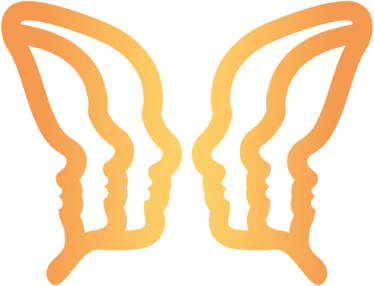One technique I use a lot that has produced some results that are as dramatic as the Core Transformation process came from something a psychotherapist told me that sounds much like something Virginia Satir might have done–maybe I read it in one of her books.
In doing family therapy, she had a family where the impasse was between the father and his 17-year-old son. The father was a “strong” and stoical man, for whom expressing emotion was not an easy or desirable skill. She had the son go and stand behind the seated father and gently place a hand on each of his father’s shoulders in order to “feel and relieve some of the tension there.” Apparently this was of great effect in changing the relationship between father and son, so naturally it got me thinking.
As I have mentioned previously, the internal representations of problem people are rarely, if ever, radiating beauty and light. I’ll often ask what the expression on their face is, and what their posture is. Then I’ll ask the client to imagine walking behind that person and gently placing a hand on each shoulder and giving just a little gentle massage to loosen the person up a bit. As the client imagines touching the person, this also shifts the kinesthetic submodalities. Usually the representation itself changes, relaxes, or even starts crying.
For instance:
Client: “I feel criticized.”
Therapist: “What has to happen inside for you to feel criticized?” (Since criticism is a largely verbal activity. I could have asked, “And who criticizes you, and what do they say?”)
C: “I hear a voice.”
T: “And if that voice were a person, who would that be?”
C: “My father. My father was always criticising me; he had a horrible voice like that.” (Client has not seen father for over 14 years.)
T: “And if your father were in the room now, where would he be?”
C: “Standing right in front of me, really close.”
T: “That’s right. Now close your eyes. I want you to imagine walking around behind him and gently place one hand on each of his shoulders and whisper into one ear that is close enough to hear you, to ‘Relax now. . . all the way.’ . . . (pause) . . . Tell him it’s OK . . . it’s OK . . . and gently massage those shoulders; give him a moment to relax, all the way down now. . . .”
Try this now yourself; think of someone you felt inferior to as a child, and hold that representation in mind. Then stand up, go around behind them, and gently massage their shoulders and notice the difference. . . .
This is a nice maneuver that achieves several things simultaneously. Primarily it completely shifts the spatial orientation of the client in relation to the representation. Instead of facing each other in opposition, they become oriented in the same direction, with implications of alliance and cooperation. In addition, massaging someone’s shoulders and talking to them in this way presupposes a much more friendly relationship than criticism does, opening the door to a more understanding attitude.
One aspect of this is worth pointing out, as it isn’t always obvious at first. When you elicit a representation from a sitting client and then ask them to stand up, the representation tends to stay where it is in geographical space. A representation that is a negative artifact from childhood is often bigger, or higher up than the client, and because of this it often represents something more powerful than the client. However, when you stand up and massage someone’s shoulders, you are the same height, with implications of equality. And when you feel equal to someone else, you feel much less defensive and protective.
In my early daze, I would try to get the client to reduce the size of the representation, or “push” it further away. Invariably they would find some kind of difficulty. Then I chanced upon the move described above, which is much more graceful and effective. Essentially, this puts the client in control of the representation, and gets the representation to relax. The representation is exactly that–a representation of a part of himself, a bit of his own psyche that isn’t feeling nice.
This is a hugely powerful technique. I prefer to have the client remain sitting and do this in their imagination. However, it isn’t unusual for someone to actually stand up and go through the physical motions of these activities.
This is a selection from a rollicking and original new book: The Rainbow Machine: Tales from a Neurolinguist’s Journal, By Andrew T. Austin.






